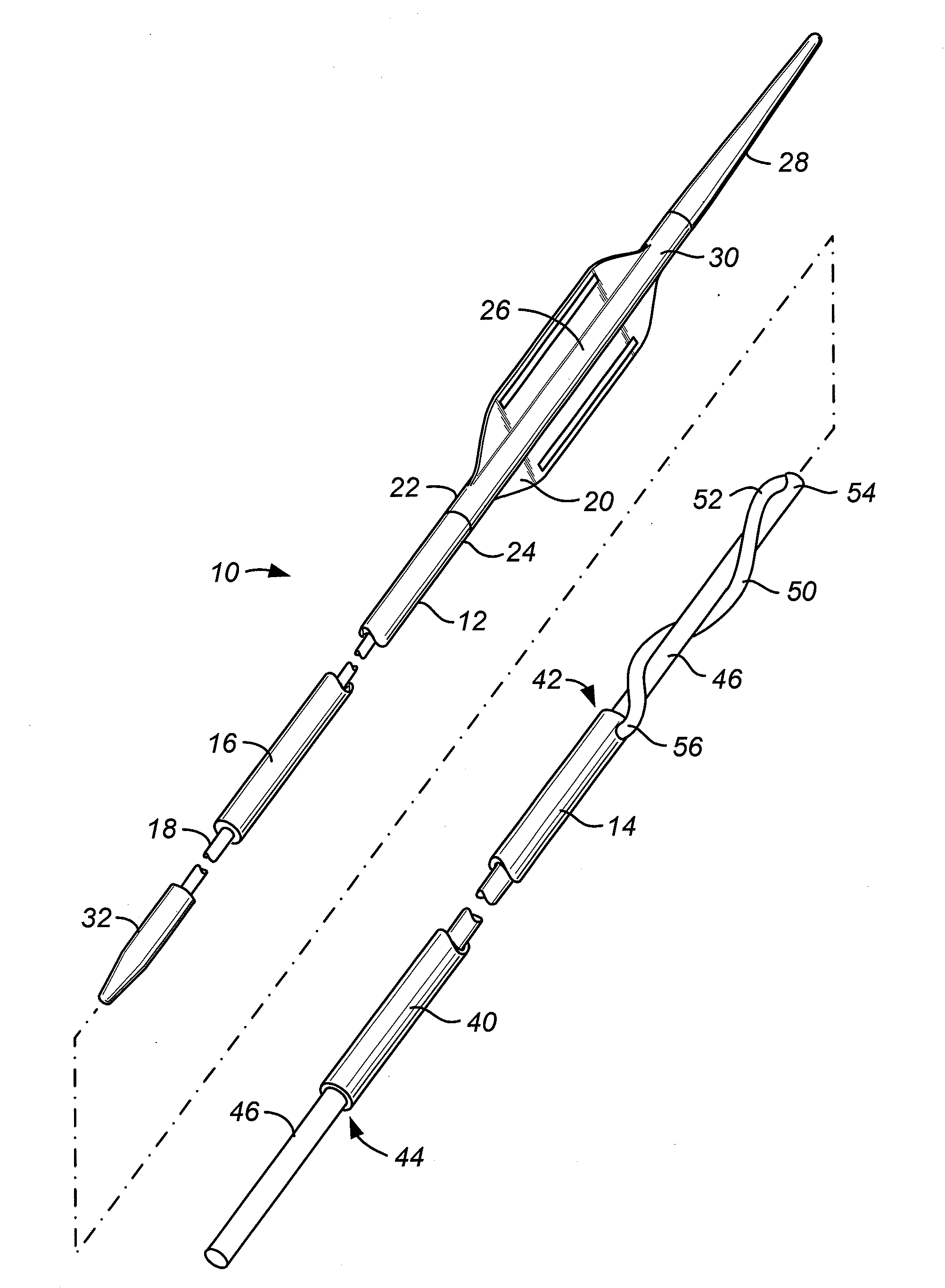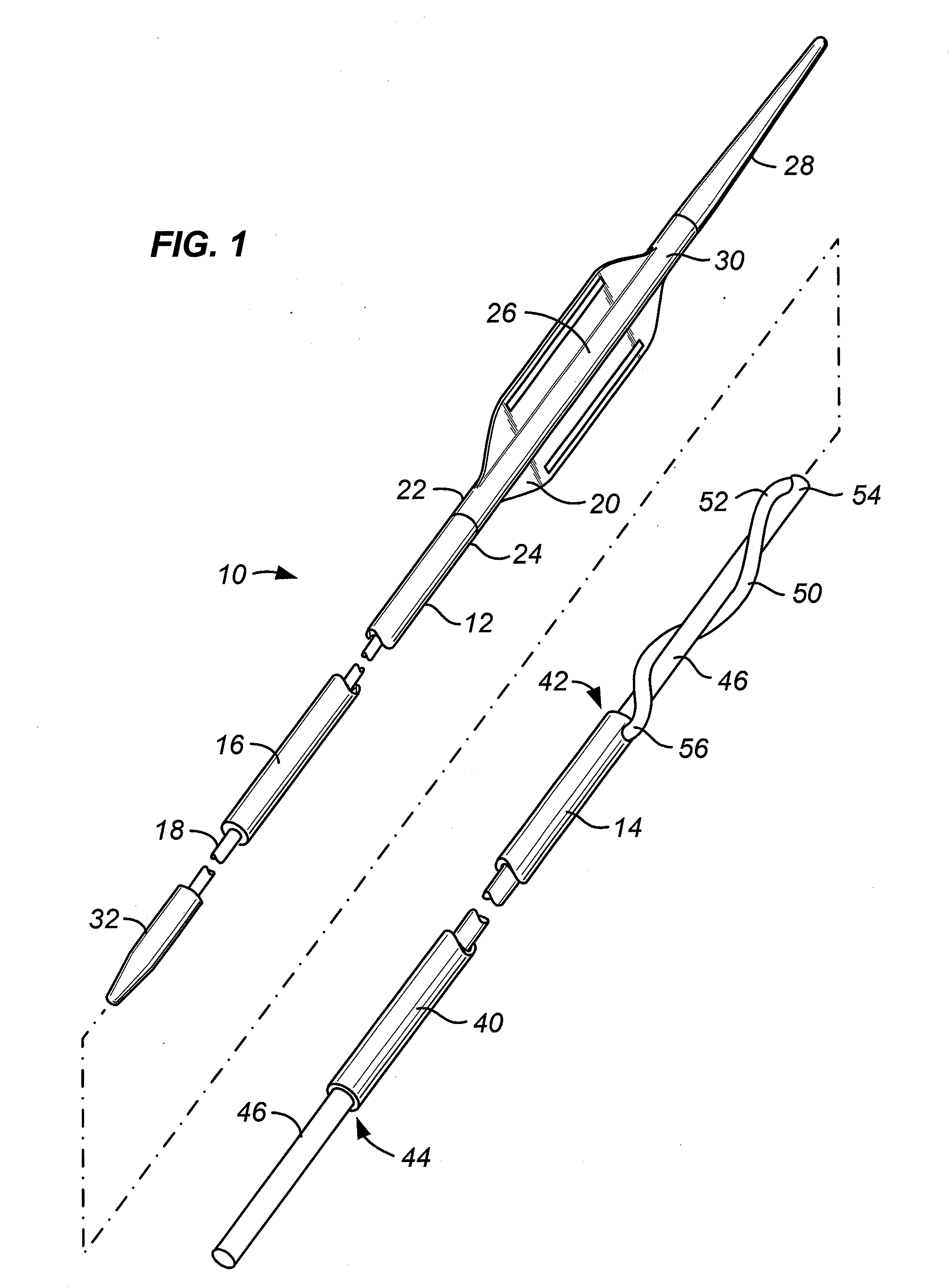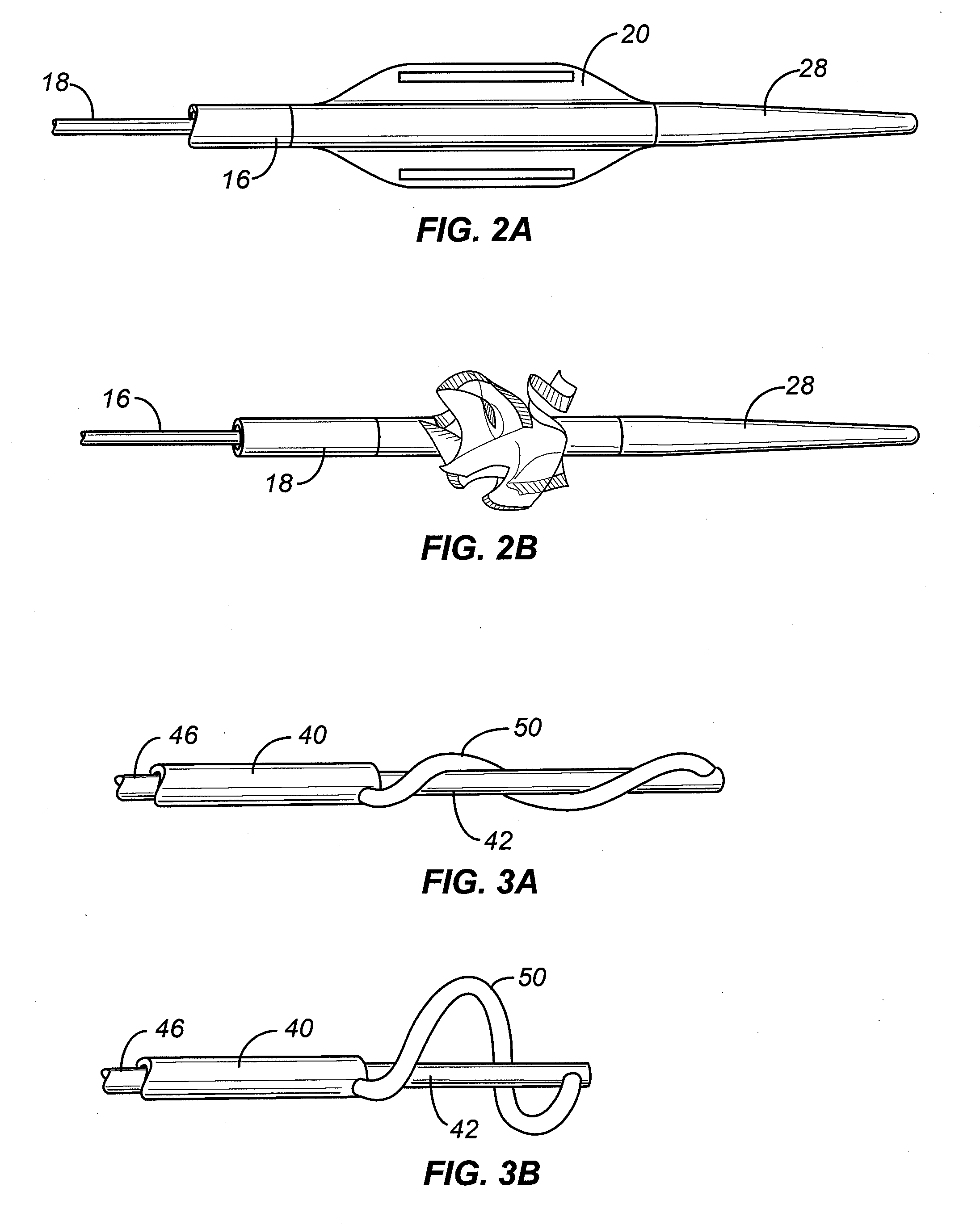Systems and methods for stone removal
- Summary
- Abstract
- Description
- Claims
- Application Information
AI Technical Summary
Benefits of technology
Problems solved by technology
Method used
Image
Examples
Embodiment Construction
[0027]Referring now to FIG. 1, a stone removal system 10 constructed in accordance with the principles of the present invention comprises a sweeping structure 12 and a dilating structure 14. The sweeping structure 12 typically comprises a shaft 16 which slidably receives a rod 18 in a central passage thereof. A flat film 20 has a proximal end 22 attached to a distal end 24 of the shaft. The rod 18 extends through or over the length of the flat film 20, typically being positioned within a lumen 26 formed in the film. Usually, the rod 18 terminates in an atraumatic tip 28, where a distal end 30 of the film is attached to the rod just proximally of the atraumatic tip 28.
[0028]As illustrated in FIGS. 2A and 2B, the flat film 20 may be axially foreshortened and radially expanded by pulling or tensioning the rod 18 in a proximal direction relative to the shaft 16. Flat film 20 in its foreshortened, radially expanded configuration is illustrated in FIG. 2B. The film will usually have a wid...
PUM
 Login to View More
Login to View More Abstract
Description
Claims
Application Information
 Login to View More
Login to View More - R&D
- Intellectual Property
- Life Sciences
- Materials
- Tech Scout
- Unparalleled Data Quality
- Higher Quality Content
- 60% Fewer Hallucinations
Browse by: Latest US Patents, China's latest patents, Technical Efficacy Thesaurus, Application Domain, Technology Topic, Popular Technical Reports.
© 2025 PatSnap. All rights reserved.Legal|Privacy policy|Modern Slavery Act Transparency Statement|Sitemap|About US| Contact US: help@patsnap.com



